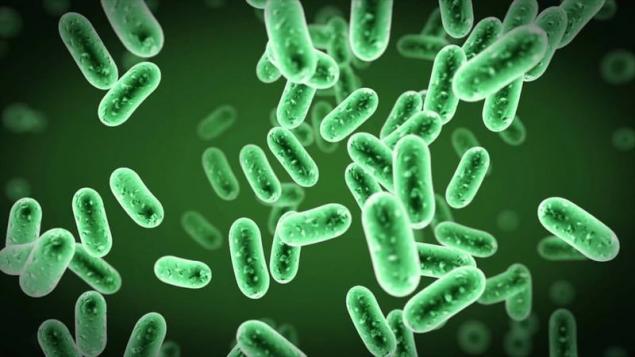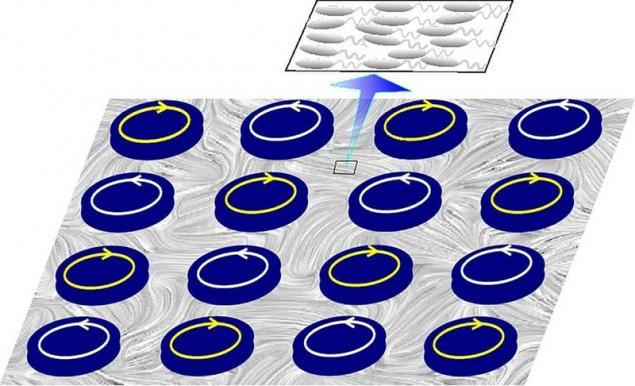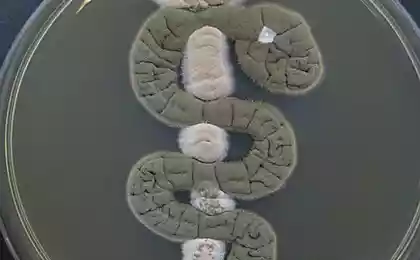510
Because bacteria have built a "wind farm"
To do this, the researchers used a computer simulation, which revealed that the substance with the effect of swarming may drive the cylindrical rotor. The work is published in the journal Science Advances.

swarming effect occurs when a plurality of particles sostavlyayuschihkakuyu any substance, make chaotic movements. According to scientists, they can be used to create a tiny power plants that can supply power microscopic motors, optical switches, and even some parts of smartphones. A suitable "fuel" is a dense bacterial suspension having one important feature - they "flow" of themselves
. Bacteria are able to move while living in a nutrient solution, but they too are not ordered motion to extract energy therefrom. For this purpose, they developed a lattice consisting of 64 symmetrically arranged micromotors, and it was immersed into the slurry. Researchers have found that the bacteria spontaneously started to move so that the neighboring rotors become rotatable in opposite directions. His principle of the device resembles a wind farm.

In addition, it was found that if put to a suspension of only one rotor, it starts to rotate in a random direction. Scientists have calculated that the self-organized movement of bacteria capable of continuously generating mechanical energy, resulting in the movement of micromotors.

swarming effect occurs when a plurality of particles sostavlyayuschihkakuyu any substance, make chaotic movements. According to scientists, they can be used to create a tiny power plants that can supply power microscopic motors, optical switches, and even some parts of smartphones. A suitable "fuel" is a dense bacterial suspension having one important feature - they "flow" of themselves
. Bacteria are able to move while living in a nutrient solution, but they too are not ordered motion to extract energy therefrom. For this purpose, they developed a lattice consisting of 64 symmetrically arranged micromotors, and it was immersed into the slurry. Researchers have found that the bacteria spontaneously started to move so that the neighboring rotors become rotatable in opposite directions. His principle of the device resembles a wind farm.

In addition, it was found that if put to a suspension of only one rotor, it starts to rotate in a random direction. Scientists have calculated that the self-organized movement of bacteria capable of continuously generating mechanical energy, resulting in the movement of micromotors.























